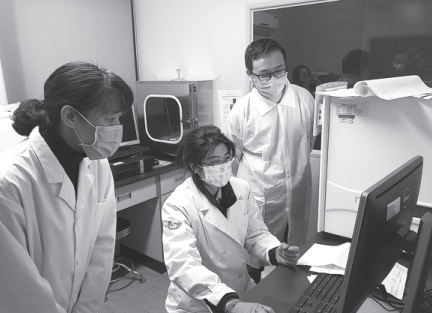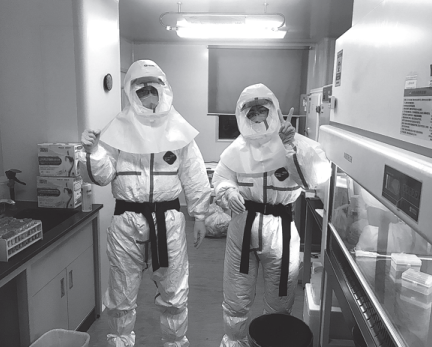'Virus detective' confident of team cracking case

TIANJIN-At 10 pm one chilly evening, 26-year-old Zheng Xukun, protected head-to-toe by a hazmat suit together with an N95 mask, a pair of medical goggles, latex gloves and waterproof protective boots, was still busy detecting nucleic acid of the novel coronavirus.
Zheng is one of the "virus detectives" working at the Center for Disease Control and Prevention in Enshi Tujia and Miao autonomous prefecture in Central China's Hubei province, the hardest-hit by the coronavirus epidemic.
Zheng has been working as a CDC laboratory technician for three years in North China's Tianjin city, responsible for detecting more than 1,000 samples of flu-like throat swabs and 100 samples of measles and rubella every year.
"I am working with the virus every day," she says, smiling.
On Feb 1, she volunteered to go to Enshi, about 1,500 kilometers from her hometown, to aid local colleagues in nucleic acid detection in the hard-hit region.
Zheng still remembers the day when she arrived in the virus-hit city with another three technicians. "It was a rainy, cold morning. Local staff prepared cotton-padded shoes for us. They are not the most fashionable, but they are warm."
Nucleic acid detection has been the most important method to screen the latent virus in the body of a patient since the outbreak, but it was not as easy as people thought. The workload of sample testing was beyond Zheng's imagination.
During her nearly 40 days of work in Enshi, Zheng has been working around the clock to extract nucleic acid from throat swabs, prepare detection reagents and analyze the results with specific equipment as she must deliver the entire day's data to the local CDC headquarters as fast as possible.
She has four to five hours of being in the same space as the virus during every shift in the laboratory which tests about 500 samples on average every day.
"It takes a while to just put the thick hazmat suit on, so many of us would rather wear diapers than go through the hassle of going to the toilet," she says. "By the end of the day, I am drenched in sweat and my face is left with marks from wearing a protective mask."
For every sample, she needs to press the sample gun three times to extract nucleic acid. "After repeating the move many times, my thumb became sore and numb, but I stuck to it," Zheng says.
The workflow of a nucleic acid detector is also a high risk. During the detection process, a large number of aerosols that are extremely contagious will be generated if a detector disposes of a sample containing the virus in a wrong way.
"You must be extremely cautious no matter how skillful you are. Every operation must strictly follow the safety regulations, which really tests your physical strength and endurance," Zheng says.
As of March 5, the CDC in Enshi had tested more than 20,000 samples.
"I am very proud of my work which provides a reliable diagnosis basis for doctors," says Zheng. "I will stay here until the end of the epidemic."
Xinhua


Today's Top News
- Xi presents orders to promote two military officers to rank of general
- Xi congratulates Jose Antonio Kast on election as Chilean president
- China urges opposition to Japanese official's nuclear remarks
- Ukraine says latest peace talks with US, Europe 'productive'
- Asia's rise and Europe's structural decline
- Economic stability a pillar of China's national security






























